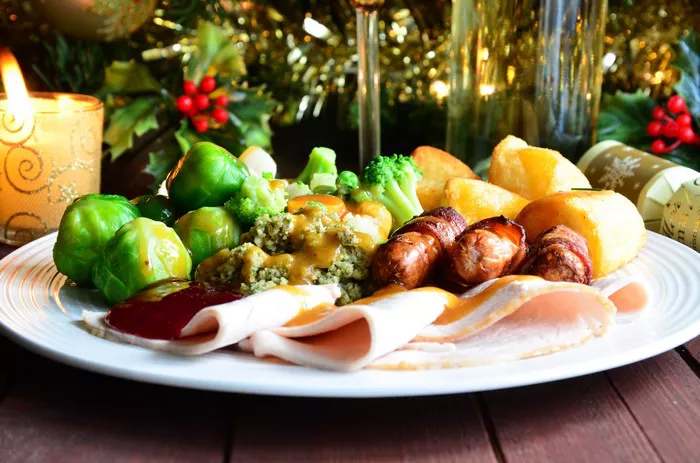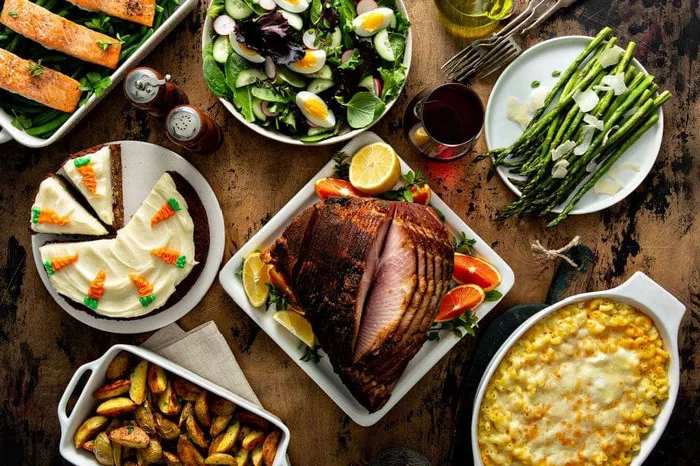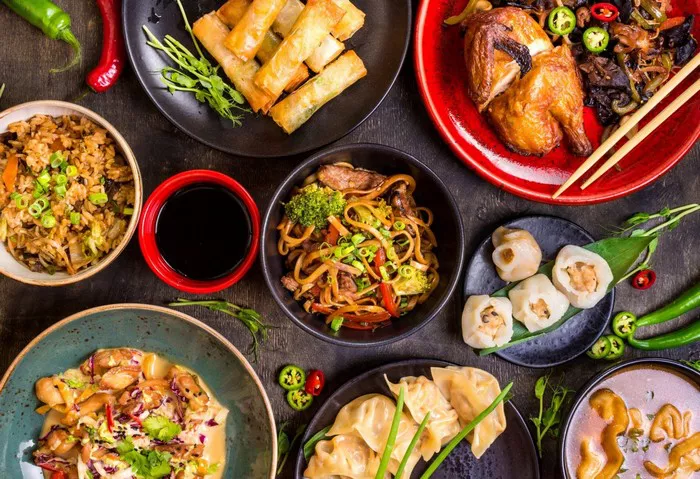When the holiday season approaches, cultures around the world come together to celebrate in their unique ways, and Mexico is no exception. One of the most cherished and anticipated celebrations in Mexico is Christmas, a time filled with joy, love, and delectable cuisine. Mexican Christmas dinners are a delightful reflection of the country’s vibrant culture, combining centuries-old traditions with modern influences to create a mouthwatering and festive feast. In this article, we will explore the rich tapestry of flavors, ingredients, and customs that make a typical Mexican Christmas dinner a cherished affair.
The Essential Elements of Typical Mexican Christmas Dinner
Mexican cuisine is renowned for its complex and diverse flavors, brought to life by a myriad of indigenous ingredients and cooking techniques that have been passed down through generations. A typical Mexican Christmas dinner showcases these flavors in a sumptuous spread, featuring a wide array of dishes to satisfy every palate. Let’s delve into some of the essential elements that make up this culinary tapestry:
Tamales: A Labor of Love
Tamales hold a central place in Mexican Christmas dinners, embodying the spirit of communal cooking and family bonding. These steamed corn dough pockets, known as masa, are filled with a variety of savory or sweet fillings, such as shredded chicken, pork, beans, cheese, or fruits. Wrapped in corn husks and cooked to perfection, tamales are a delightful treat that brings everyone together during the holiday season.
Pozole: A Hearty Hominy Stew
Pozole is a traditional Mexican stew made with hominy (dried corn kernels), meat (usually pork or chicken), and an assortment of herbs and spices. This comforting and nourishing dish is often served with an array of toppings like shredded cabbage, radishes, lime, and dried oregano. Pozole has pre-Hispanic origins and is an essential part of Christmas celebrations in many regions of Mexico.
Bacalao: A Legacy from Spain
Bacalao, or salted codfish, is a dish that reflects Mexico’s historical ties with Spain. The Spanish brought this delicacy to Mexico, and it has become an integral part of the Christmas dinner tradition. The codfish is rehydrated and cooked with tomatoes, onions, olives, capers, and various seasonings, creating a rich and savory dish that is sure to please seafood enthusiasts.
Ensalada de Nochebuena: A Festive Christmas Salad
Ensalada de Nochebuena, or Christmas Eve salad, is a vibrant and colorful dish that brings a burst of freshness to the Christmas table. It typically combines jicama, beets, oranges, pomegranate seeds, and sugarcane, dressed with a tangy vinaigrette. The salad’s colors represent the red and green hues of the holiday season, making it a visually appealing and delicious addition to the meal.
Romeritos: A Unique Mexican Herb
Romeritos are a distinctive Mexican herb that plays a significant role in Christmas dinners. The plant’s delicate green leaves are sautéed with a shrimp and mole sauce, creating a flavorsome and aromatic dish. Romeritos are typically served with tender potatoes and accompanied by dried shrimp patties known as “tortitas de camarón.”
Bunuelos: Sweet Fried Delights
No Christmas dinner in Mexico would be complete without something sweet, and bunuelos fit the bill perfectly. These crispy, golden pastries are deep-fried and dusted with cinnamon sugar, creating a delightful treat that is often enjoyed with a warm drink like Mexican hot chocolate.
Atole and Ponche: Warm Holiday Beverages
Atole and ponche are traditional Mexican beverages that keep everyone warm and cozy during the Christmas celebrations. Atole is a thick, masa-based hot drink flavored with cinnamon, vanilla, and sometimes chocolate. Ponche, on the other hand, is a spiced fruit punch made with a medley of fruits like tejocotes, guavas, apples, and hibiscus flowers, resulting in a fragrant and comforting concoction.
Regional Variations
Mexican Christmas dinners are as diverse as the country itself, with each region offering its unique dishes and customs. While some elements remain constant throughout the country, regional variations add a distinctive touch to the festive feast. Let’s take a closer look at some of the regional differences in Mexican Christmas dinners:
Northern Mexico: A Carnivorous Affair
In the northern states of Mexico, such as Chihuahua, Nuevo Leon, and Sonora, Christmas dinners lean towards hearty and meat-centric dishes. Roasted meats like turkey, lamb, or beef are often the star of the show, accompanied by a variety of salsas and grilled vegetables. Flour tortillas, a staple in northern Mexican cuisine, are also prevalent on the Christmas table.
Central Mexico: Enchiladas and More
Central Mexico, including Mexico City and its surroundings, boasts a wide array of delicious dishes for Christmas. Enchiladas, filled with chicken or cheese and topped with a luscious sauce, are frequently served. Mole poblano, a complex and flavorful sauce made with chocolate and chili peppers, is another beloved Christmas specialty in this region.
Southern Mexico: Tamales Galore
In the southern states of Oaxaca and Chiapas, tamales reign supreme during the Christmas season. Tamales made with banana leaves as wrappers and filled with unique ingredients like black mole, sweet pineapple, or savory chicken in green sauce are highlights of Christmas dinners in these regions.
Yucatan Peninsula: Achiote-infused Delights
The Yucatan Peninsula brings its distinctive flavors to the Christmas table, featuring dishes like cochinita pibil, a succulent roasted pork marinated in achiote (a red spice paste). Alongside this delicacy, you’ll find other Yucatecan specialties such as papadzules, salbutes, and pan de cazón, each contributing to the region’s mouthwatering Christmas offerings.
Customs and Traditions
In Mexico, Christmas is more than just a time for delicious food; it’s a celebration of family, community, and faith. The customs and traditions surrounding Mexican Christmas dinners vary from one family to another, but they all share the common thread of creating cherished memories and fostering a sense of togetherness.
Las Posadas: A Symbolic Journey
The Christmas season in Mexico kicks off with “Las Posadas,” a nine-day reenactment of Mary and Joseph’s search for a place to stay in Bethlehem. Each night, from December 16th to December 24th, families and friends gather to recreate the journey, going from house to house, singing carols, and asking for shelter. At the final stop, everyone enjoys a festive meal, including traditional treats like buñuelos and ponche.
La Nochebuena: Christmas Eve Extravaganza
La Nochebuena, or Christmas Eve, is the pinnacle of the holiday celebrations in Mexico. Families come together for a grand feast, which often includes a late-night dinner after attending midnight Mass, known as “Misa de Gallo.” The elaborate spread is typically served at a beautifully decorated table, adorned with candles, flowers, and seasonal decorations.
Breaking the Piñata: Joyful Revelry
The piñata is a beloved Mexican tradition that adds excitement and merriment to Christmas gatherings. Usually shaped like a star or a traditional Christmas symbol, the piñata is filled with candies, fruits, and small toys. Blindfolded participants take turns trying to break the piñata with a stick, while others sing a traditional song called “La Piñata” until it shatters, showering its contents on the ground for everyone to collect.
El Día de los Santos Inocentes: Mexican April Fools’ Day
On December 28th, Mexicans celebrate “El Día de los Santos Inocentes,” which translates to “Day of the Innocent Saints.” This is their version of April Fools’ Day, and people play lighthearted pranks and practical jokes on family and friends, adding a touch of humor and laughter to the festive season.
Embracing the Spirit of Sharing and Giving
In addition to celebrating with loved ones, Mexican Christmas dinners often involve acts of charity and giving. The holiday season is a time of great compassion and generosity, with many families and communities organizing events and distributing food and gifts to those in need. This spirit of sharing and giving reflects the essence of the Christmas celebration in Mexico—a time to come together and spread joy to others.
Conclusion
A typical Mexican Christmas dinner is a captivating fusion of flavors, traditions, and customs that embody the rich cultural heritage of Mexico. From the heartwarming aroma of tamales fresh from the steamer to the vibrant colors of the ensalada de Nochebuena, the Christmas feast is a true feast for the senses. As families and friends gather around the table to share stories, laughter, and love, it becomes evident that the essence of Christmas in Mexico lies not just in the food but in the connections forged and cherished during this special time of the year. So, this Christmas season, whether you find yourself in Mexico or beyond, consider adding a touch of Mexican flair to your celebrations by savoring the unique flavors and embracing the spirit of togetherness that makes this festive occasion so special. ¡Feliz Navidad y Próspero Año Nuevo! (Merry Christmas and Happy New Year!)



























